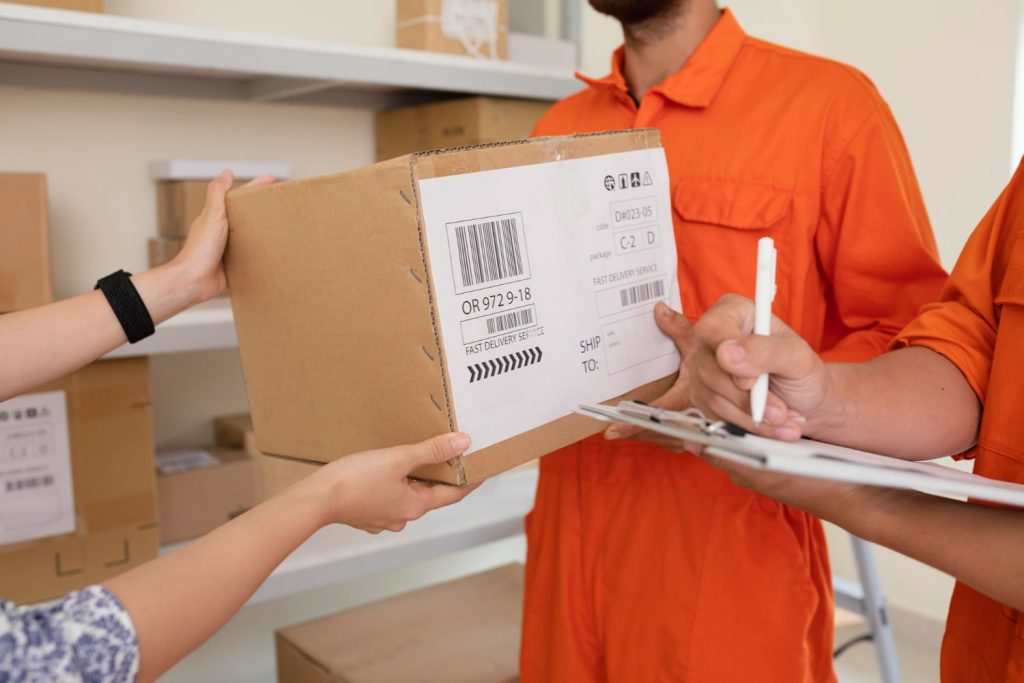As an intrinsic “cog” of the modern supply chain network, micro-fulfillment centers (MFCs) are always looking to streamline order fulfillment operations – from order receipt to product dispatch. Typically, the order fulfillment process in any retail setup comprises the following steps:
- The customer places the order.
- The retailer receives the order.
- The retailer checks for product availability in their inventory.
- If available, the retailer confirms the order and sends the notification to the customer.
- The retailer picks and packs the ordered item in the MFC to deliver to the customer.
- The retailer sends the product to the customer’s location.
- The customer receives and acknowledges the delivery.
- The retailer completes the order fulfillment – unless the customer places a product return request.
Each of these steps is crucial in the order fulfillment process. Here’s a “birds-eye” view of every MFC operational stage and the need to automate it:
- Inventory management
For efficient retailers, the order fulfillment process starts before the customer has even placed the order. Before processing any customer order, they need to have the stock available in the MFC inventory.
Insufficient inventory replenishments cause between 70 to 90% of stockouts. Through automatic replenishment of MFCs, companies can ensure the seamless supply of finished goods to their inventory. However, stock replenishments in MFCs face a couple of challenges including:
- Limited space to store the replenishments
- Increased transportation costs
- Quality control
After the inventory receipt, companies need to check the quality of the received goods. For instance, check for any damaged or expired items. On average, around 2% of inventory at distribution centers is damaged when received.
Hence, quality control is essential to mitigate the risk of sending defective items to the customer. Why? 20% of customer’s product returns happen due to damaged goods, while 23% are because of the customer receiving the wrong product.
Through automation, MFCs and distribution centers can optimize their quality control process thus ensuring that:
- They ship the right products for every customer order.
- They inspect every inventory item for quality and damages.
- Human operators spend less time and effort verifying customer orders.
- Order processing
The order fulfillment process begins once the company receives the customer’s order. This step is possible only when the ordered product is in stock. On receiving the order, the company sends a confirmation to the customer in the form of an SMS or email message. To save time, companies execute order processing in parallel to inventory processing of the received order.
Does order processing need to be automated? Yes. Besides the convenience of sending automated emails to customers, automated order processing can benefit retailers in the following ways:
- Saves time spent on manual processing of customer orders.
- Improves customer service by helping them track the status of their placed orders.
- Automates the entry of customer and order details, thus avoiding costly human mistakes.
- Improves customer’s trust by delivering their orders on time.
- Order picking and packing
Once the order is processed, it’s time for the retailer to send the order details to the MFC or distribution center. Typically, order details include:
- Product SKU
- Quantity of items
- Customer’s delivery address
On-time order pickup and packing are essential for companies striving for same-day deliveries. Among the main challenges, fulfillment centers mainly depend on manual labor for picking and packaging delivery items. With Goods-to-Person (G2P) automation, retailers can replace the “traditional” process with industrial robots, automated retrieval systems, and warehouse management.
- Order transport and delivery
This step is the most cost-intensive function of order fulfillment. On average, deliveries cost between 10 to 15% of the order value. To add to the challenge, customers now demand and expect same-day (or next-day) deliveries from their preferred brands. Last-mile deliveries also account for 53% of the total shipping costs.
By automating last-mile and same-day deliveries, retailers can leverage benefits like:
- Limited human dependency
- Lower fuel consumption
- Improved chances of first-attempt deliveries
- Real-time visibility into transport operations
Based on real-time traffic conditions, automated last-mile delivery solutions can recommend the fastest delivery routes, thus minimizing order fulfillment time.
- Reverse logistics
30% of all purchased online products are returned by customers – as compared to just 8.89% in brick-and-mortar stores. Over 90% of consumers plan to purchase items from retailers with a convenient returns policy.
For product returns, reverse logistics is a major cost factor that includes transportation, order processing of returned products, and product inspection. Besides, reverse logistics demand 20% additional floor space as compared to forward logistics.
Automation in reverse logistics can help retailers effectively:
- Perform the order fulfillment process in reverse.
- Leverage AI technology to check for damaged or used products.
- Integrate undamaged products back into the inventory.
Conclusion
In the retail industry, the order fulfillment process begins before customers place their orders. Hence, companies are gradually turning towards automation to streamline their order fulfillment and stay competitive.
As a leading order fulfillment solution provider, Cartesian Kinetics has specialized in a host of technology-driven solutions in:
- E-commerce
- Micro store replenishment
- Dark store fulfillment
- Reverse logistics
- Kitting
Our leading automation solution, Carte+ can improve your last-mile fulfillment and enable same-day deliveries. You can experience the difference that Carte+ makes to your business. Reach out to us today!


